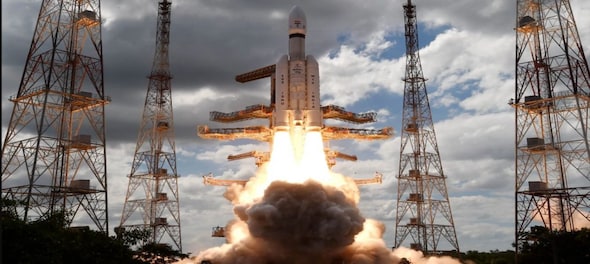
India's Chandrayaan-2, which had "partially failed" in 2019, might prove to be a key to Chandrayaan-3's success if the latter makes a "soft" and successful landing on the Moon's surface on August 23. Indian Space Research Organisation (ISRO) Chief S. Somnath said earlier this month that "the knowledge we had on Chandrayaan-2, we have used here (in Chandrayaan-3 mission).
Learning from the past experiences, the space agency has worked around the clock to deal with the complexities of the Moon's south pole which is said to have remained deprived of the sunlight for years.
What went wrong with Chandrayaan-2?
As per the plan, lander Vikram was supposed to lose most of its velocity by the time it was 400 meters from the lunar surface. It was supposed to hover above the intended landing site in order to make a soft vertical descent at "walking pace," Indian Express reported. However, the lander crashed, or made a hard landing, on the Moon’s surface because of its high velocity.
According to news agency PTI, Somanath earlier this year pointed out three mistakes that led to Vikram's hard landing:
5 lessons related to Chandrayaan-2 that has helped Chandrayaan-3
Besides, the solar panels are bigger than last time. Also, Chandryaan-3 has more solar panels so as to generate more power, he added. Moreover, the "tanks have grown bigger... as it has more fuel this time,” he said. "Earlier we landed with a single engine, this time we are landing with two engine," he explained.
He added that this time, an image captured by Chandrayaan-2 orbiter was used for "better identification of the locations.” He said the landing site was "imaged properly.” While shedding light on how ISRO chose the landing site, Somnath recalled that last time "some other nation's image was used while planning for Chandryaan-2.”
4. The communication links are very important. The ISRO chief said Chandrayaan-2 orbiter is functioning very well and this will communicate with Chandrayaan-3 lander. This signal will reach the ground station. He explained, "The way we communicate from Moon to Earth is through ground station... we also connect with other nations... but ultimately, the signal comes from the orbiter."
5. Somnath emphasised the "on-orbit test and evaluations.” He said, in this new method, "... anything …can get tested, verified and in the orbit..." He said the entire procedure of bringing it down to the orbiter to the Moon and to the landing site has been substantially changed.
He said the spacecraft was tested for the ability to withstand vibrations by flying it over different terrains using a helicopter, while cranes were used to test the landing processes. "We did new test beds for simulation, which was not there last time. This was to look at failure scenarios," Somanath said.
With key improvements, ISRO has been exuding confidence about Chandrayaan-3 successfully making a soft landing on the Moon. Even "if everything fails, if all the sensors fail, nothing works, still it (Vikram) will make a landing. That’s how it has been designed — provided that the propulsion system works well,” Somanath said.



